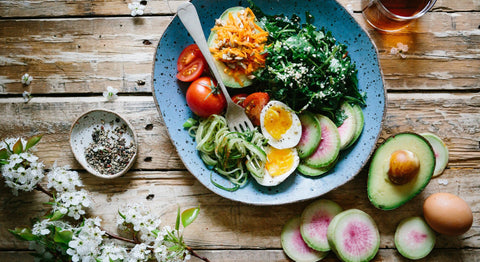Evolution shaped us to survive during periods and in places with varied food availability. They ate, gathered and hunted where they were. The food was rich in fiber and no part of the prey was wasted.
Our genes were shaped by our environment
Down at the molecular level, we are created for the life our ancestors lived. They slept in complete darkness, the digestion was allowed to rest at night, which optimized the production of hormones. They sat by the fire and walked barefoot in the daylight with digging sticks and spears. Living traditionally includes everything from natural light and water, movement, sleep and physical social contacts.
Location-bound food
Our ancestors' food was climate and seasonal, rich in nutrition but sometimes there was less food. When you eat a paleo diet, you strive to emulate this.
How did the Stone Age diet differ from our standard diet?It was rich in:
- B12, choline, K2, vitamin D, heme iron, vitamin A
- easily digestible protein
- fibers that favor good intestinal flora
- essential fats such as DHA, EPA and a healthy balance between omega 3 and omega 6
- minerals & trace elements
- processed carbohydrates
- processed vegetable oils
- grass seeds, i.e. common cereals
Plants and fruits are eaten in season. The milk of other animals was probably consumed in very limited quantities.
High protein quality means that the protein has a good composition of amino acids. Plant protein has a lower protein quality than animal protein.
However, legumes, roots, nuts and seeds were part of the diet and contributed important fibers and other phytonutrients.
Adapt the diet to your needs and conditions
A small part of us still have the gene that codes for lactase and can thus break down milk sugar. But a robust intestinal flora can partially break down lactose even though we lack lactase. Fermenting milk or using only clarified butterfat can make it easier to tolerate a small amount of milk protein or milk sugar.
What is included in a paleo diet?
- non-toxic, grass-fed meat, including organ meats such as liver, kidney, heart
- fish and shellfish
- natural fats such as tallow, lard, fish liver, egg yolk, coconut, olive, avocado
- fruits, berries and vegetables in season - some health centers do not recommend fruit all year round unless you live in a more tropical latitude
- green leaves, herbs, roots, nuts some seeds, algae
What is not included in a paleo diet?
Some exclude legumes and dairy products. Common, however, is that they exclude processed food such as grain flour, refined/heated vegetable oils, sugar and additives.
Benefits of paleo diet:
The degree of inflammation is lowered and the immune system gets a chance to balance. For people with an autoimmune disease, it is one of the basic prerequisites for healing - along with other lifestyle changes related to air, light, movement, sleep.
Autoimmune paleo diet
With an autoimmune paleo diet, you also avoid substances that can irritate the immune system & nerves and worsen inflammation:
- nightshade plants
- legumes
- milk products
- nuts and seeds
- egg (or at least the white)
After a period of strict autoimmune diet, you can try to introduce some of the foods again and see if you can tolerate them.
Optimize health with pure supplements
Natural, unprocessed food and water should be able to provide what we need, and to a large extent this is true. But most soils and water no longer contain the nutrients we need. And many of us - unfortunately - find it difficult to eat organ meat such as e.g. liver and heart.
So certain supplements can optimize health even if eating an organic paleo diet:
- Organ supplements from grass-fed animals
- The world's purest cod liver oil - provides both EPA, DHA and real vitamin A balanced with vitamin D
- Most people do well with extra magnesium – especially if you get more vitamin D through your diet or cod liver oil




